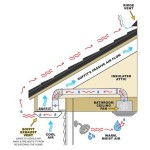Caulk Around Bathroom Sink Drain: A Guide to Proper Installation
A bathroom sink drain is a crucial part of the plumbing system, and its proper installation is essential for preventing leaks and water damage. While most sink drains are designed to be watertight, the area around the drain can be vulnerable to seepage, especially if the caulk seal is compromised. This article will provide a comprehensive guide to caulking around a bathroom sink drain, covering important considerations, materials, and step-by-step instructions.
1. Importance of Caulking Around Bathroom Sink Drain
Caulking around a bathroom sink drain serves several important purposes:
Prevents Water Leakage:
The caulk acts as a barrier, preventing water from seeping under the sink and potentially causing damage to the surrounding floor, cabinets, and subfloor.Prevents Mold and Mildew Growth:
A leaking drain can create a moist environment, promoting the growth of mold and mildew, posing health risks and causing unpleasant odors.Enhances Aesthetics:
A neatly caulked drain adds a finished look to the bathroom sink area, improving its overall appearance.
Properly installed caulk can effectively prevent these issues, ensuring a functional and aesthetically pleasing bathroom environment.
2. Choosing the Right Caulk for Bathroom Sink Drain
Selecting the correct caulk for the bathroom sink drain is crucial for a successful and long-lasting seal. Several types of caulk are available, each with its unique properties and applications. Some commonly used caulk types include:
Silicone Caulk:
Highly resistant to moisture, mold, and mildew, making it ideal for bathroom applications. It is flexible, allowing for movement between surfaces, and can withstand repeated exposure to water. However, silicone caulk can be difficult to remove and is not paintable.Acrylic Caulk:
A versatile option, acrylic caulk is water-resistant, easy to apply, and can be painted. It is also available in various colors to match the surrounding surfaces. However, it may not be as durable as silicone caulk and is less resistant to moisture and mold.Polyurethane Caulk:
This type of caulk offers excellent adhesion, elasticity, and durability, making it suitable for high-traffic areas. It is also resistant to mold and mildew, but it can be difficult to remove and may not be paintable.
When choosing caulk, consider the specific requirements of the bathroom sink drain and the existing materials. For most bathroom sink drain applications, silicone caulk is the most suitable choice due to its moisture resistance and durability.
3. Tools and Supplies for Caulking
To properly caulk around a bathroom sink drain, you will need the following tools and supplies:
Caulk Gun:
A caulk gun dispenses the caulk smoothly and efficiently.Caulk Remover (Optional):
A caulk remover is useful for removing old caulking before applying new.Utility Knife:
A sharp utility knife is used to cut the caulk tube and for smoothing the caulk bead.Caulk Trimmer:
A caulk trimmer helps create a neat, finished look by trimming excess caulk.Cleaning Cloth:
A clean, damp cloth is needed to remove excess caulk and clean the surfaces.Disposable Gloves:
Protect your hands from the caulk material.Masking Tape (Optional):
Masking tape can be used to protect surrounding areas while applying the caulk.
Gather all the necessary tools and supplies before starting the caulking process to ensure a smooth and efficient workflow.
4. Step-by-Step Instructions
Follow these step-by-step instructions to effectively caulk around a bathroom sink drain:
- Prepare the Area: Turn off the water supply to the sink. Remove the drain stopper and any debris around the drain opening. Clean the area thoroughly with a cleaning agent, ensuring all dirt, grease, and old caulk residue are removed.
- Remove Existing Caulk: If there is old caulk around the drain, use a caulk remover to carefully remove it. Use a utility knife for stubborn remnants, taking care not to damage the surrounding surfaces.
- Apply Masking Tape (Optional): If desired, apply masking tape around the drain opening to protect the surrounding area from caulk spills.
- Prepare the Caulk: Cut the tip of the caulk tube at a 45-degree angle to create a smooth, consistent bead. Insert the caulk tube into the caulk gun and be sure to remove the cap from the tube.
- Apply the Caulk: Hold the caulk gun at a 45-degree angle to the surface and squeeze the trigger slowly and evenly. Apply a continuous bead of caulk around the sink drain opening, ensuring it fills the entire gap between the sink and the countertop.
- Smooth the Caulk: Use a utility knife or caulk trimmer to smooth the caulk bead, creating a neat and uniform finish. Remove any excess caulk with a clean, damp cloth.
- Allow the Caulk to Cure: Follow the manufacturer's instructions for the curing time of the caulk. Avoid using the sink until the caulk is fully cured, typically around 24 hours.
By following these steps carefully, you can ensure a proper and long-lasting caulk seal around your bathroom sink drain.
5. Maintenance Tips
To maintain the integrity of the caulk seal, follow these tips:
Regular Inspection:
Regularly check the caulk seal around the drain for any signs of deterioration, cracks, or gaps.- Prompt Repair:** Address any damaged or missing caulk promptly to prevent leaks and moisture buildup.
- Avoid Harsh Chemicals:** Avoid using harsh chemicals or abrasive cleaners directly on the caulk, as they can damage its surface.
Proper maintenance can extend the lifespan of the caulk seal and prevent future problems.
Caulking around a bathroom sink drain is a straightforward process that can significantly enhance its functionality and aesthetic appeal. By selecting the right caulk, utilizing the proper tools, and following the step-by-step instructions, you can ensure a watertight seal and prevent potential leaks and damage. Regular maintenance is essential to keep the caulk seal effective and protect your bathroom from moisture-related problems.

How To Caulk A Drain 14 Steps With Pictures Wikihow Life

Installing A New Bathroom Sink

How To Re Caulk A Sink
How To Re Caulk A Bathroom Sink Ifixit Repair Guide

How To Replace Caulk Around Your Bathroom Sink In A Few Minutes

How To Caulk A Drain 14 Steps With Pictures Wikihow Life
How To Re Caulk A Bathroom Sink Ifixit Repair Guide
How To Re Caulk A Bathroom Sink Ifixit Repair Guide

How To Caulk A Bathroom Sink 12 Steps With Pictures Wikihow

How To Caulk Around A Sink Or Toilet In Two Minutes Less
Related Posts







